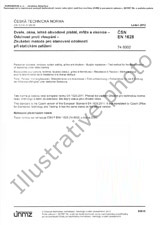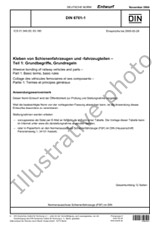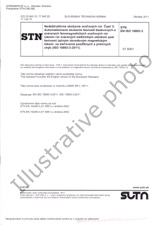We need your consent to use the individual data so that you can see information about your interests, among other things. Click "OK" to give your consent.
ASTM G148-97(2011)
Standard Practice for Evaluation of Hydrogen Uptake, Permeation, and Transport in Metals by an Electrochemical Technique
STANDARD published on 1.5.2011
The information about the standard:
Designation standards: ASTM G148-97(2011)
Note: WITHDRAWN
Publication date standards: 1.5.2011
SKU: NS-57414
The number of pages: 10
Approximate weight : 30 g (0.07 lbs)
Country: American technical standard
Category: Technical standards ASTM
The category - similar standards:
Annotation of standard text ASTM G148-97(2011) :
Keywords:
charging, decay current, diffusivity, electrochemistry, flux, hydrogen, permeation, transient, Charging, Decay current, Diffusivity, Electrochemical measurements/testing, Hydrogen, Permeation, Transients, Transport in metals, ICS Number Code 77.040.01 (Testing of metals in general)
Additional information
| Significance and Use | ||
|
The procedures described, herein, can be used to evaluate the severity of hydrogen charging of a material produced by exposure to corrosive environments or by cathodic polarization. It can also be used to determine fundamental properties of materials in terms of hydrogen diffusion (for example, diffusivity of hydrogen) and the effects of metallurgical, processing, and environmental variables on diffusion of hydrogen in metals. The data obtained from hydrogen permeation tests can be combined with other tests related to hydrogen embrittlement or hydrogen induced cracking to ascertain critical levels of hydrogen flux or hydrogen content in the material for cracking to occur. |
||
| 1. Scope | ||
|
1.1 This practice gives a procedure for the evaluation of hydrogen uptake, permeation, and transport in metals using an electrochemical technique which was developed by Devanathan and Stachurski. While this practice is primarily intended for laboratory use, such measurements have been conducted in field or plant applications. Therefore, with proper adaptations, this practice can also be applied to such situations. 1.2 This practice describes calculation of an effective diffusivity of hydrogen atoms in a metal and for distinguishing reversible and irreversible trapping. 1.3 This practice specifies the method for evaluating hydrogen uptake in metals based on the steady-state hydrogen flux. 1.4 This practice gives guidance on preparation of specimens, control and monitoring of the environmental variables, test procedures, and possible analyses of results. 1.5 This practice can be applied in principle to all metals and alloys which have a high solubility for hydrogen, and for which the hydrogen permeation is measurable. This method can be used to rank the relative aggressivity of different environments in terms of the hydrogen uptake of the exposed metal. 1.6 This standard does not purport to address all of the safety concerns, if any, associated with its use. It is the responsibility of the user of this standard to establish appropriate safety and health practices and determine the applicability of regulatory limitations prior to use. |
||
| 2. Referenced Documents | ||
|
Similar standards:
Historical
1.11.2010
Historical
1.7.2012
25.10.2004
27.12.1983
WITHDRAWN
1.5.2006
1.9.1996
We recommend:
Technical standards updating
Do you want to make sure you use only the valid technical standards?
We can offer you a solution which will provide you a monthly overview concerning the updating of standards which you use.
Would you like to know more? Look at this page.



 ASTM E768-99(2010)..
ASTM E768-99(2010).. ASTM F1376-92(2012)..
ASTM F1376-92(2012).. BS EN 10204:2004..
BS EN 10204:2004.. ČSN 420302
ČSN 420302 DIN EN ISO 3785:2006..
DIN EN ISO 3785:2006.. STN 040005
STN 040005
 Cookies
Cookies
